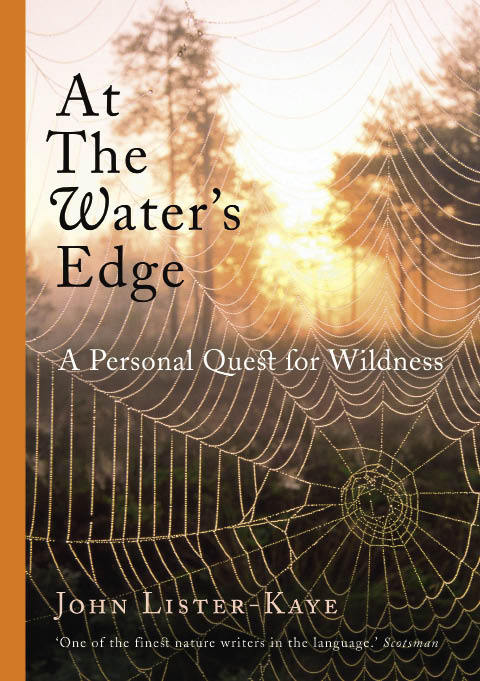For the last 30 years John Lister-Kaye has lived at Aigas, in the valley of the River Beauly, seven or eight miles from the sea and half an hour west of Inverness.
For the last 30 years John Lister-Kaye has lived at Aigas, in the valley of the River Beauly, seven or eight miles from the sea and half an hour west of Inverness. This is not Mongolia or Greenland and the personal quest for wildness which this book records is no tale of courage in the distant wastes. It is written at home, the gleanings from a daily stroll around his own heart-shaped loch, eight acres of water caught in the glen just above his house (and the nature centre he runs there).
There is a model for this, which Lister-Kaye invokes: Thoreau’s shed in the woods at Walden Pond, where, a five-minute drive from the centre of Concord, and with his mother’s cooking and laundry facilities to hand, the great Transcendentalist confronted the sublime realities of American nature.
The quest for the ultimate connection with the wild when wandering around one’s own pond, stretching the legs after a bit of work in the morning, might be in danger of absurdity. Surely nature can’t be nibbled at like this, bite-sized chunks of otherness sending mini-ripples of delight down the ever-ready spine?
And sure enough, the book begins uncertainly, its intentions clear but the language casting about for a suitable tone. Lister-Kaye speaks of his ‘singing heart’ and ‘an ascending spiral of the spirit’. He muses how
in another age I fancy I might have chosen to be a pioneer settler on the very frontier of real wilderness. Oh! To have felt the earth tremble beneath those massed millions of buffalo hooves thundering across the American plains … Oh! To have known the unknown.
When he comes to ‘the inherent poesy of the birds’ melodious accomplishment’ and ‘the relentless scythe of the Reaper’, you start to long for something else.
And then, miraculously, he provides it. The trick of nature writing, maybe, is secrecy, the assumption that no one else is there, that these revelations are being whispered behind a cupped hand. Or even more solitary than that, the writer is talking to himself. You should feel, as the reader, that you have, amazingly, been given access to the privacy of someone else’s mind. As soon as any hint of the lecture hall or the drinks party comes with it, doubt comes too. The writing has to stalk its prey; it can’t wander up and slap it on the back.
Lister-Kaye has this gift for entirely intimate engagement, above all with other animals. The key ingredients are stillness, patience and a pair of supremely expensive binoculars. Nothing but the Swarowskis will do. Equipped with them, he can write about meeting animals in a way no one else in this country can match. He remembers one dark autumn coming up close against the violent sexual energy of red deer stags in rut, an experience ‘as close to wildness as you can get in Britain’. He mimics a stag on that intense, testosterone-laden evening and finds himself, in a terrifyingly vivid passage, mistaken for a rival and charged down a rocky hillside, leaving him bruised, bleeding and everlastingly impressed by the reality of wildness beyond the pretty or the philosophical.
That immediacy of contact, on all sorts of scales, makes the book live in your hands. Three fighting blue tits, so obsessed with their mutual loathing that he can pick them up and ‘for a moment hold them in my hands, still fizzing like a bomb’; trout feasting on a hatch of flies, when ‘the fish are past caring, on a roll, bug mad, crazed by the crunch of chitin and the sweet tang of soft, juicy centres’; a dazed woodcock, caught a glancing blow by a car, making a territorial display when put in the boot of Lister-Kaye’s own car, where it ‘chasséd and turned’ like a woodland ballerina; and deep in the middle of the book an unequalled description, written almost in real time, of a long stalk of a stag through his own wood, eventually finding him surrounded by his hinds, lolling in the shadows, unaware that any other creature is even near. It was a passage that made me long to be the man who could do such a thing.
Only at the very end does he make explicit something that comes as a shock: a deep loathing of the human race in general and of himself as its representative. He is watching a tawny owl which has floated
effortlessly on to a branch only a few feet away. I am wondering what it will make of me when I have to blink and it sees the moon reflected in my eyes, when this exquisite, soft-plumed wild creature realises the awful truth, when it sees me for what I am.
What he is, according to his own understanding, and in common with the rest of us, is a destroyer of all the beauty he has described. The book ends with something that has often coloured the minds of the great naturalists: a plea for humanity ‘to reduce our populations across the globe.’ Can that be right? To love nature, do you have to hate what people have become?





Comments